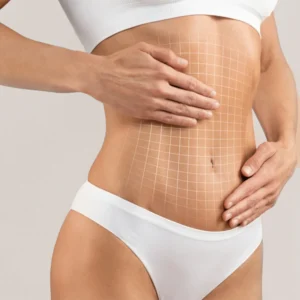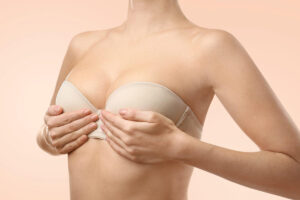Ageing is a natural part of life, but that doesn’t mean you can’t influence how you age. With modern aesthetic treatments like Botox and dermal fillers, achieving a youthful, refreshed look is more accessible than ever. However, figuring out which treatment suits you best—or if a combination might be ideal—can be overwhelming. While both Botox and fillers target signs of aging, they do so in distinct ways.
Are you looking to smooth out wrinkles or restore lost volume? Maybe you want to achieve both! In this article, we’ll clarify the differences between Botox and fillers, explain their mechanisms, and assist you in determining the best choice for your anti-aging objectives.
What Is Botox?
Botox, which stands for botulinum toxin, is a neuromodulator that temporarily relaxes specific muscles. This relaxation helps to smooth out dynamic wrinkles—lines that form from repeated facial expressions like smiling, frowning, or squinting.
Common Areas Treated with Botox:
Forehead lines: The horisontal lines that emerge when you raise your eyebrows.
Frown lines (11s): Vertical creases that develop between the eyebrows.
Crow’s feet: The fine lines found at the outer corners of the eyes.
How It Works:
Botox inhibits nerve signals to targeted muscles, stopping them from contracting. This softens existing wrinkles and can even help prevent new ones from appearing. The effects usually last for about 3–4 months, after which the treatment can be repeated.
What Are Dermal Fillers?
Dermal fillers, in contrast, are gel-like substances injected under the skin to restore lost volume, smooth out lines, and enhance facial contours. Unlike Botox, fillers target static wrinkles—those caused by gravity, aging, or a decrease in skin elasticity.
Types of Fillers:
- Hyaluronic Acid (HA) Fillers: Well-known brands such as Juvederm and Restylane are composed of HA, a substance that occurs naturally in the body. These fillers help to hydrate and add volume to the skin, typically lasting between 6 to 18 months.
- Calcium Hydroxylapatite Fillers: Brands like Radiesse offer more structural support and can last for up to 18 months.
- Poly-L-Lactic Acid Fillers: Products like Sculptra promote collagen production and can provide results that last up to 2 years.
Common Areas Treated with Fillers:
- Cheeks: To restore volume and enhance facial contours.
- Lips: For adding fullness or reshaping.
- Nasolabial folds: The lines that extend from the nose to the mouth.
- Under-eye hollows: To reduce the appearance of a sunken or fatigued look.
Botox vs. Fillers: Key Differences
Although both Botox and fillers are injectable treatments, they have distinct purposes. Here’s a side-by-side comparison:
Aspect | Botox | Fillers |
Primary Function | Smoothes dynamic wrinkles. | Restores volume and fills static wrinkles. |
Best For | Crow’s feet, frown lines, forehead lines. | Cheeks, lips, under-eyes, nasolabial folds. |
How It Works | Relaxes targeted muscles. | Plumps and hydrates the skin. |
Duration | 3–4 months. | 6 months to 2 years. |
Can Botox and Fillers Be Combined?
Absolutely! Using Botox alongside fillers can help achieve a more harmonious and youthful appearance. This method, often referred to as a liquid facelift, targets various signs of aging at once:
- Botox works to relax dynamic wrinkles, resulting in smoother skin.
- Fillers help restore lost volume and enhance the contours of the face.
For instance, while Botox diminishes crow’s feet, fillers can add volume to cheeks and lift sagging skin. Together, they offer a non-surgical solution for comprehensive anti-aging effects.
What to Expect During the Treatments
Both Botox and fillers are minimally invasive procedures that take place in-office. Here’s what you can expect:
For Botox:
- The treatment usually lasts about 10–15 minutes.
- You might feel a slight pinch with each injection, but the discomfort is minimal.
- Results typically become visible within 3–7 days.
For Fillers:
- The procedure takes around 30–45 minutes.
- A topical numbing cream is often used to minimise discomfort.
- Results are immediate, although some swelling may occur.
- Both treatments involve minimal downtime, allowing you to resume your daily activities shortly after.
Choosing the Right Treatment for You
If you’re concerned about expression lines like crow’s feet or forehead wrinkles, Botox is likely the better option.
Fillers are the way to go if you’re looking to restore volume in areas such as your cheeks or lips.
For a more comprehensive anti-aging strategy, combining both treatments may yield the best results.
Tips for Getting the Best Results
Select a Qualified Injector: Always choose a licensed and experienced professional to ensure safe and effective outcomes.
- Discuss Your Goals: Be open about your concerns and desired results during your consultation to develop a tailored treatment plan.
- Maintain Your Results: Since Botox and fillers are temporary, regular maintenance sessions are essential for keeping your look fresh.
Embrace a Younger, More Confident You
Botox and fillers are powerful tools in the fight against aging, each with its unique strengths. Whether you’re looking to smooth wrinkles, restore volume, or achieve a combination of both, these treatments offer quick, effective solutions with little to no downtime.
Ready to take the next step? Schedule a consultation with Yeap Plastics to explore your options and create a personalised anti-ageing plan. Have questions or experiences to share? Drop them in the comments below—we’d love to hear from you!











